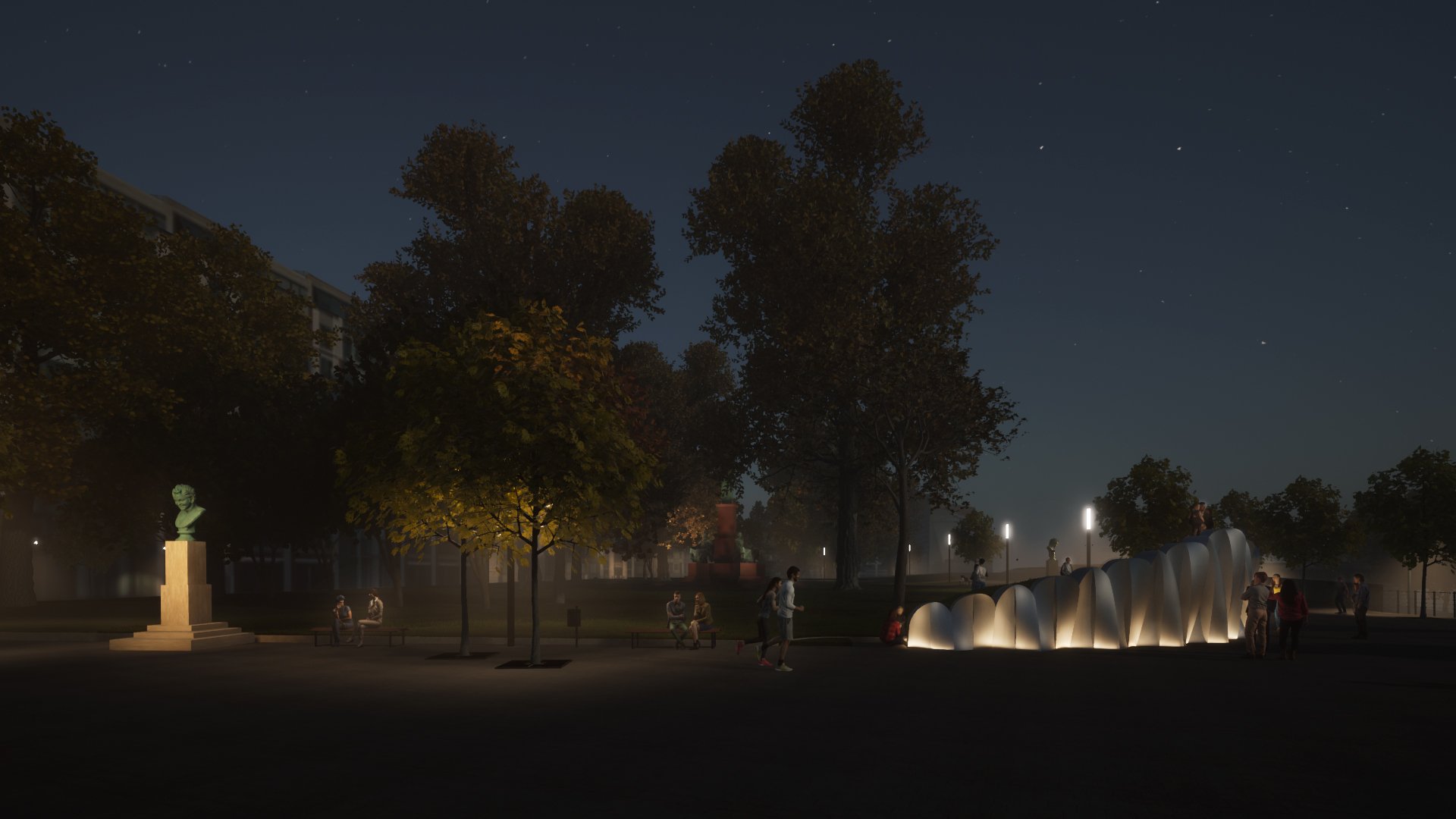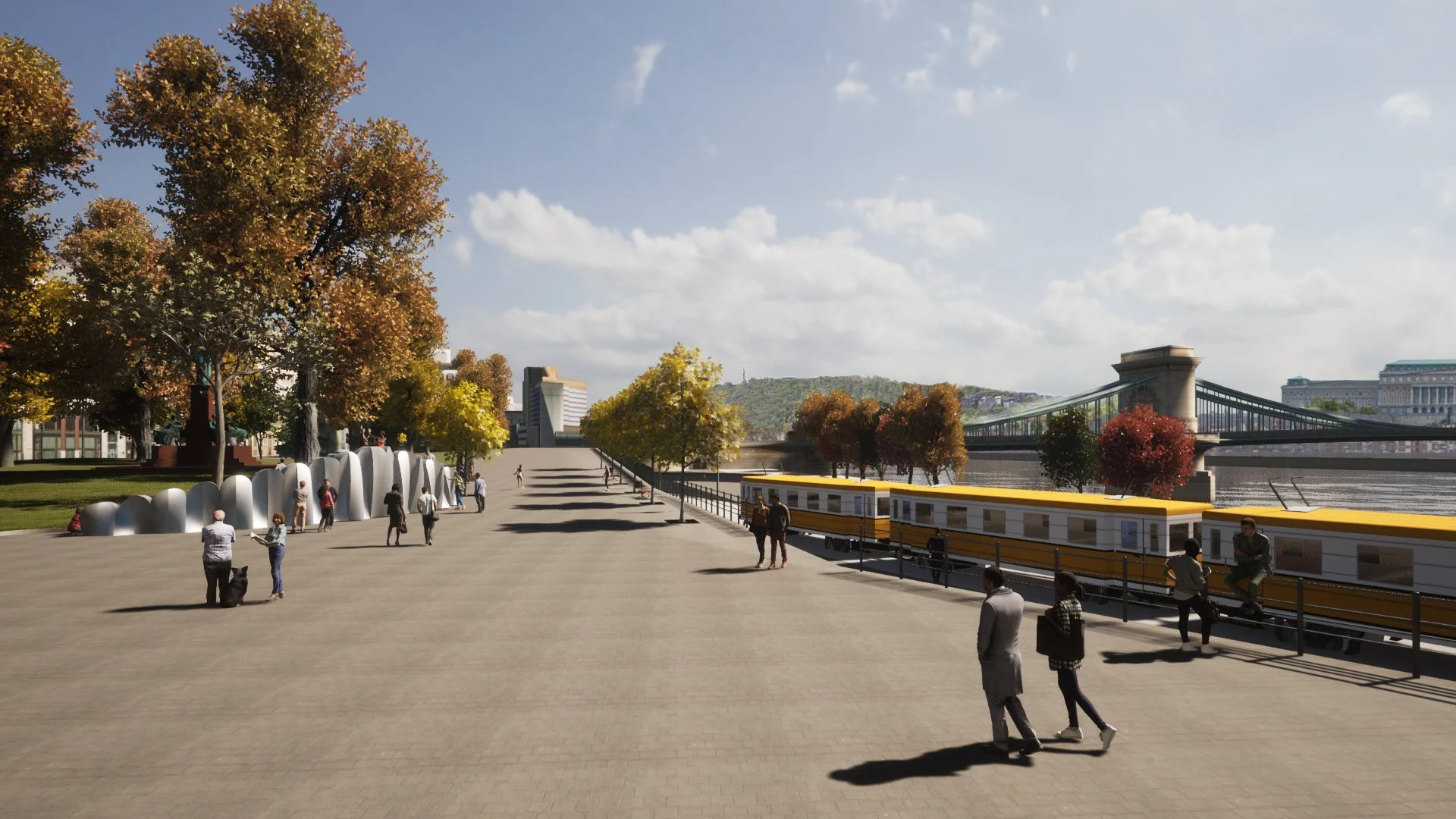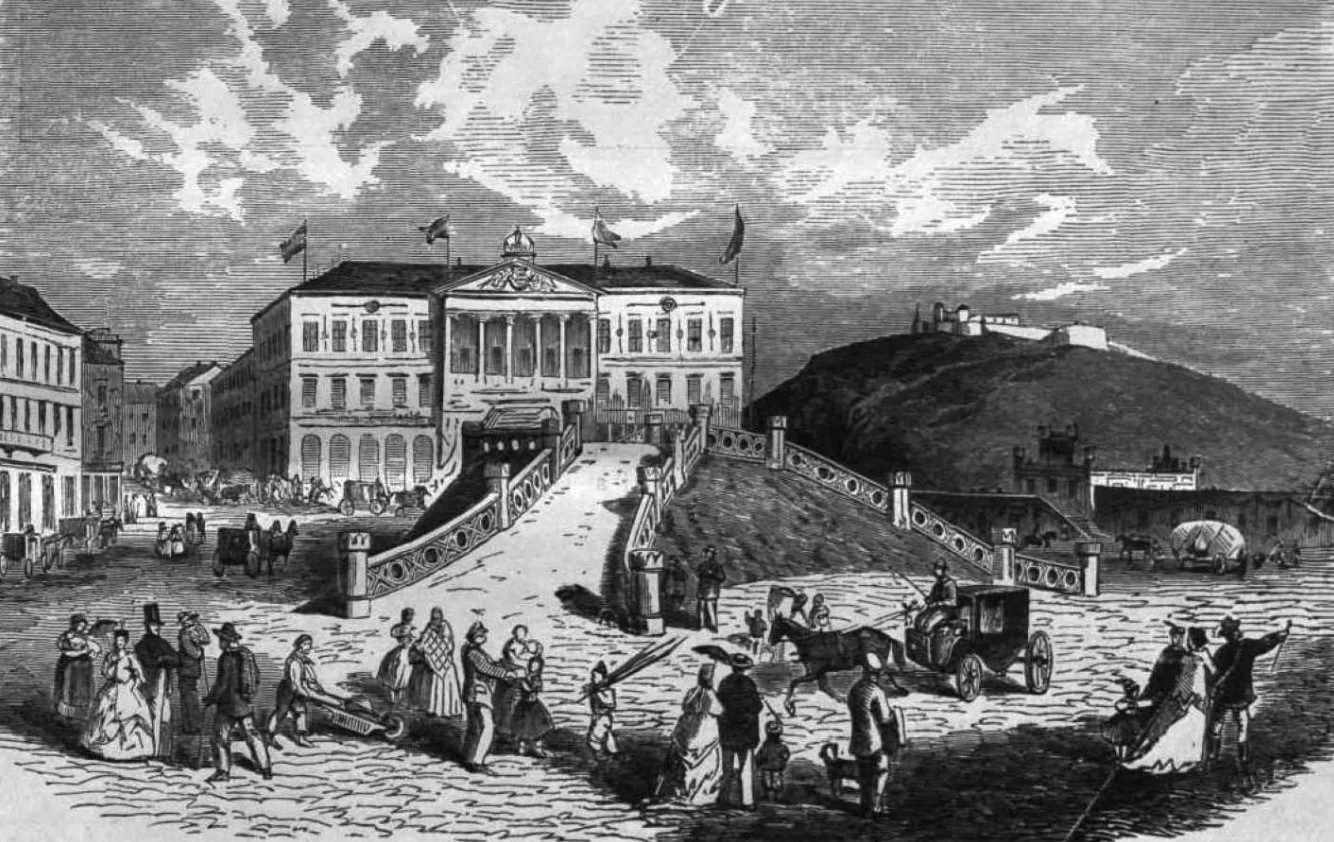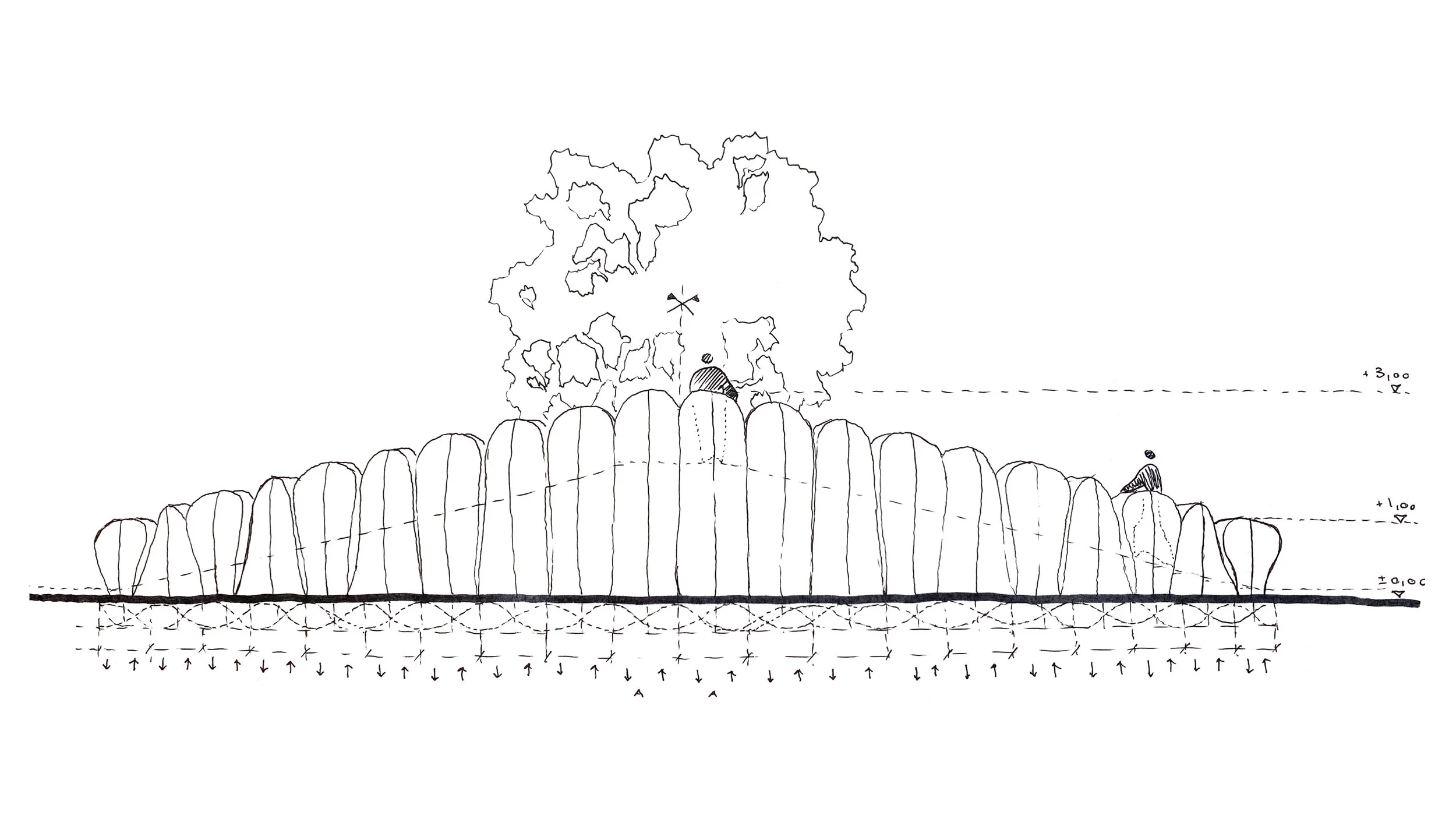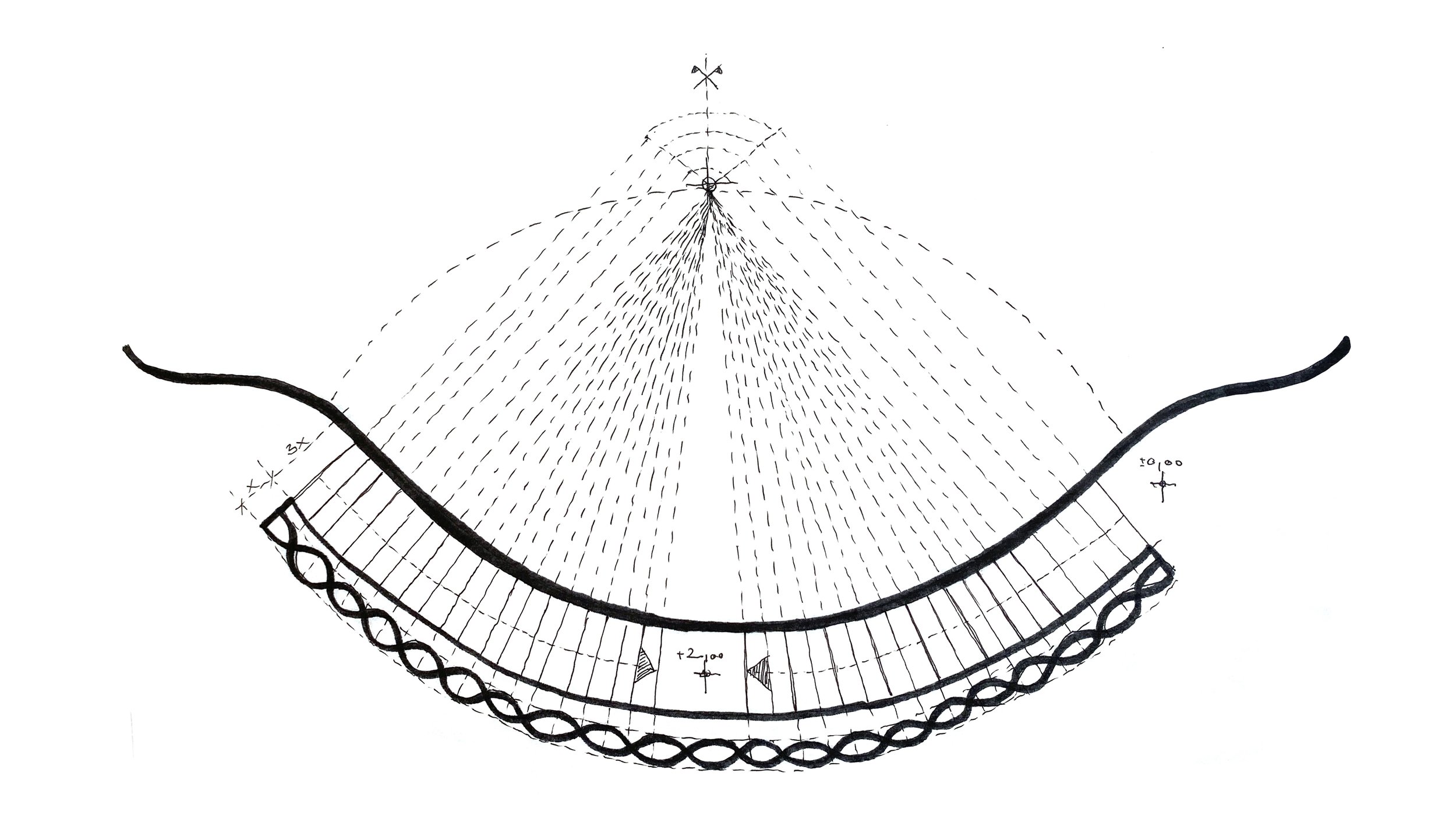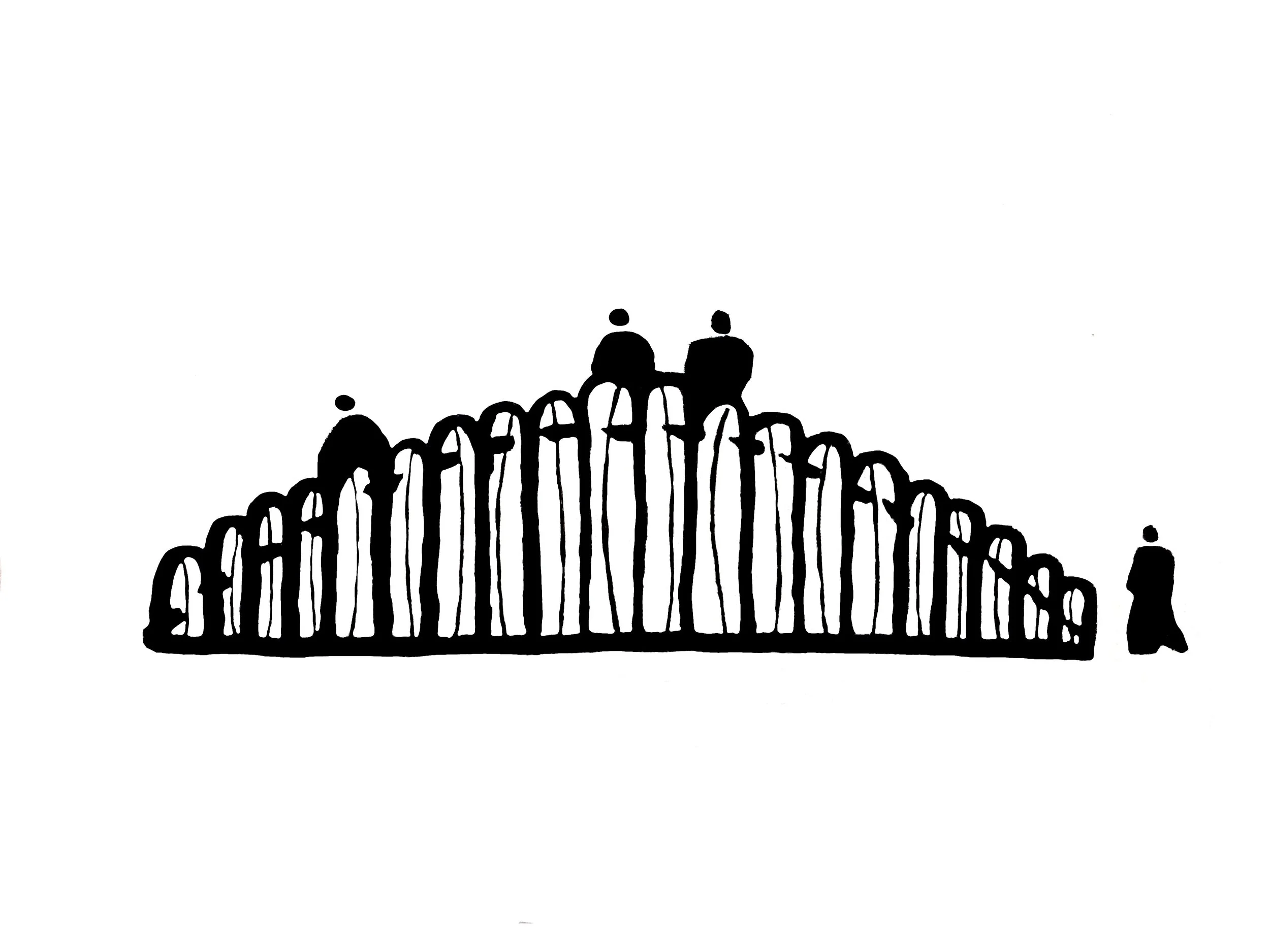Rise - MTA 200
‘Rise’ is our submission for the competition MTA200 - Tudománytér, where artists and designers were asked to create a public sculpture commemorating the Hungarian Academy of Science’s 200th anniversary.
In 1867, the Austrian Emperor Franz Joseph was crowned King of Hungary in Pest-Buda, creating the Austro-Hungarian Monarchy, followed by some 50 years of prosperity in the country's history.
One of the essential landmarks and symbols of the coronation ceremony was the Coronation Hill, built on today's Széchenyi Square, opposite the MTA building. It was built from soil from 72 (64 Hungarian, 8 Croatian) counties for the monarch, who, jumping with his horse and swinging his sword four ways, promised to protect the country.
The Coronation Hill has a rich symbolism through the historical events connected to it: it is a symbol of a new beginning, of a nation finding its way, of new perspectives, of an elevated mood, but also of a strong hierarchy of subordination.
Our design fundamentally goes back to the motif of the Coronation Hill while also reinterpreting it. Whereas in 1867, the people raised the hill to the monarch in recognition of his power, in 2023, the Hungarian Academy of Sciences, the Hungarian scientific community, will raise it for the people.
In addition to its manifold historical significance, the hill has other significant values as a natural element. On the one hand, walking up and down opens up new perspectives, which, together with the panoramic view of the Danube, offer visitors an unprecedented experience. On the other hand, it invites interaction, whether rolling down a hill on a lovely summer's day or sledding in the winter snowfall - a vertically animated space makes people feel more inclined to play, relax and connect.
One of the long-standing problems with Széchenyi Square is that the park, although accessible on foot, repels rather than invites passers-by with its high pavements and completely flat, homogeneous grassed surfaces. The planned renovation of the square will improve this situation somewhat, but the square will remain flat and mostly uninviting.
We plan to bring the joy of play and interaction back into the square's life.
Széchenyi Square, the square in front of the MTA's headquarters, has always played a significant role in political activism, with huge crowds gathering here from time to time to represent the interests of the nation.
Over the last decades, crowds' organic movement and speakers' assistance to the podium has become severely hampered or impossible in the square, whose current design has become more of a barrier to free expression than a catalyst.
As the central motif of our plan, the bicentennial Hungarian Academy of Science, its current public body of some seventeen thousand people, and the scientists who have worked within the Academy over the past twenty decades — in other words, the Hungarian scientific community of today — will raise a hill to the people, to help us tackle the problems of the past, present and future by showing new perspectives and raising the nation to new heights.
‘The quantity of scientific manpower is the nation's true power.’ These timeless thoughts by Count István Széchenyi are perhaps more relevant in today’s Hungary than ever. Building on this idea, our plan seeks to set the stage for the silenced and represent the ʼquantity of scientific manpowerʼ. In this way, the twenty-decade legacy of the MTA is represented in twenty sculptural units that dynamically advance but coalesce as a mass.
In its location and core design, details, and motifs, Rise creates a link with the building of the Hungarian Academy of Science.
Designed by August Stüler in the neo-Renaissance style around 1865, the building embodied more a universal than a national character - its architecture and spirit had a decisive influence on the further development of Hungarian architecture, anticipating the main stylistic trend in Post-Compromise urbanism. Our plan seeks to echo these aspirations and carry them forward into 2023.
The basic structural principles of the main façade, such as symmetry, the decreasing height from the center to the edges, and the series of semicircular arches are reflected in our design, as is evoking details as small as the organic ornamentation of its massive wooden doors, or even the formal world and materiality of the commemorative medal of the 150th anniversary of the Academy, which is integrated into the Academy's system of motifs.
Overall, we see our design as a complementing pair to the building of the MTA — also following a precise set of rules but keeping an organic attitude rich in detail and movement.
Throughout history, science has helped mankind understand nature and find the regularities and mathematical relationships behind structures that, at first sight, seem entirely random. The design thus borrows not only from the elements of the MTA building but also from shapes and frameworks found in nature. The ensemble, which at first glance appears to be random geometry, reveals a multitude of regularities on closer inspection.


